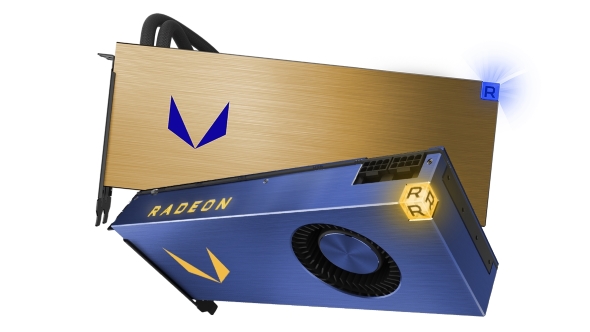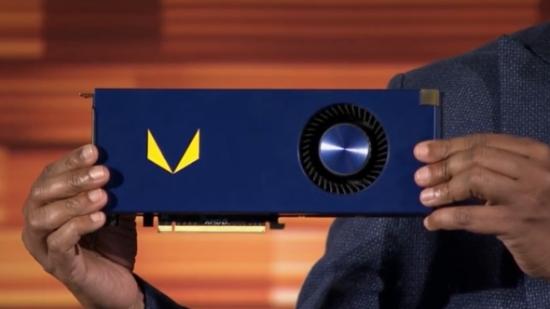The AMD Vega Frontier Edition is our first taste of AMD’s new GPU architecture and has been out for a few days now, which means those lucky enough to get hold of one are starting to share the benchmarks… to much weeping and gnashing of teeth.
It’s looking like it’s not going to be Vega, but what is the best graphics card around today? Allow us to delight and enlighten you.
If you were hoping for a high-end AMD GPU which could stand toe-to-silicon-toe with Nvidia’s mighty GTX 1080 Ti then it’s looking increasingly like you’re going to be disappointed when the RX Vega cards are released. At the moment, the Frontier Edition is trading blows with the lower-spec GTX 1080 instead.
PCPerspective have run a live benchmarking session, which you can see below, and that’s got their Frontier Edition card sitting between GTX 1070 and GTX 1080 performance levels.
While the Frontier Edition has been designed for content creators and developers it comes with a ‘gaming’ mode for said developers to test their games. That makes it representative of the final performance of the AMD RX Vega cards set to launch at the end of July, but isn’t really a 100% accurate portrayal of the sort of speeds we’ll see from them.
There is still hope for Vega then, folks.
Raja Koduri, AMD’s resident graphics hero, has gone on record stating the gaming-focused versions of Vega will run faster than the professional class Frontier Edition card. “Consumer RX will be much better optimized for all the top gaming titles,” he explains in a Reddit AMA, “and flavors of RX Vega will actually be faster than Frontier version!”
But are they going to be fast enough to eat up the ~30% delta between Nvidia’s GTX 1080 and GTX 1080 Ti? That’s a big ask, even if we’re talking about newly optimised drivers, with GPU and HBM2 silicon running at the ragged edge of peak performance.

Given the way AMD have approached this launch it seemed like they were supremely confident about the performance of Vega. I’d assumed that when performance numbers for the Frontier Edition were released it would make us all ravenous to get hold of the RX Vega cards, either driving up hype and demand for them or encouraging well-off, ‘gotta have it now’ gamers to pick up a Frontier Edition. Instead, we’ve got a lot of very worried AMD fans asking what went wrong with Vega.
I’m starting to get a horrible feeling of deja vu.
Yep, this is all feeling very much like the launch of Ryzen, where all AMD had to do was manage the hype and explain that gaming performance wasn’t quite at the same level as Intel’s best chips. Instead, they encouraged 4K game benchmarks, which took their CPU out of the equation and just tested the graphics cards, therefore offering similar performance numbers between AMD and Intel processors. All that despite pre-release testers in Nvidia warning them Ryzen’s 1080p gaming performance wasn’t where they were expecting it to be.
Since we first saw Vega in AMD’s benchmarks we’ve seen professional applications putting it around the same level as a GTX 1080 Ti (and therefore a Titan X), but the gaming metrics we’ve seen have bounced between GTX 1070, GTX 1080, and GTX 1080 Ti levels of performance. But AMD have continually reinforced the higher expectations that the RX Vega cards have been designed to solve the 4K/60fps problem, and that most definitely seems to put them in the GTX 1080 Ti’s yard.
If the final RX Vega cards do end up only offering around the same level of gaming performance as the GTX 1080, then it would probably be better for AMD to come out now and say that’s where they’re targeting these cards, and also for them to take the unprecedented step of announcing pricing too. At the moment, the hype train is in danger of being derailed by the obviously unoptimised gaming performance of the Frontier Edition, and they need to be able to bang the price/performance drum to encourage people towards the RX Vega.
After all, if AMD can only offer the same gaming performance from their brand new cards as an Nvidia GPU launched well over a year ago, then it’s all got to be down to pricing. Which is going to be tough because the HBM2 technology they’re baking into Vega is mighty expensive…
But if the proper gaming Radeon RX Vega cards are capable of getting into a GPU slugfest with the GTX 1080 Ti, then I’ve got to say AMD have bummed the poodle on Vega’s launch.
It would’ve made more sense for AMD to bring out their first high-end graphics architecture in years looking its absolute best, with the highest performing gaming SKU they could manage forming the vanguard of the new GPU tech. Following up with the slower, more reliable professional card wouldn’t have been an issue as the developers the Frontier Edition is aimed at don’t spend so much time riding the gaming hype train.

There is also the possibility AMD didn’t have a lot of choice in terms of how they managed the release of Vega. The rumours are the architecture’s launch was put back because the performance wasn’t quite where they wanted it, and because Hynix were struggling with HBM2 yields. But because AMD had been so adamant about a release in the first half of 2017 they really needed to get some Vega silicon out of the door before the end of June.
Launching the professional-class card first now gives AMD the option to keep working on squeezing every last drop of performance out of both Vega’s driver set and the architecture itself, while very reasonably being able to say the pro card isn’t meant to deliver the full potential of Vega’s gaming performance. And that also means being able to tell the city, and their investors, their new GPU is absolutely on track and they’ve hit all the deadlines they said they would.
A cynic might also suggest releasing the expectedly expensive professional cards first also gives AMD a chance to scoop up a large chunk of Vega cash before having to take a hit on final pricing for the RX Vegas. But that would be very unkind.
Until we actually get hands-on with RX Vegas at the end of July, however, we’re not going to know what sort of level of gaming prowess they really have to offer. All we can hope for is that the lovely Terry Makedon, AMD’s Mr. Catalyst, and his graphics driver team are able to make up the current performance shortfall between the Frontier Edition and the GTX 1080 Ti.
That’s where we want AMD and Nvidia to be battling it out at the high-end because we haven’t seen proper competition at the very top of the GPU tech tree for a while. And it doesn’t matter if you’re an AMD fan or bleed Nvidia green, competition is good for everyone so we need AMD to make it work.
But it’s going to be quite a challenge.
